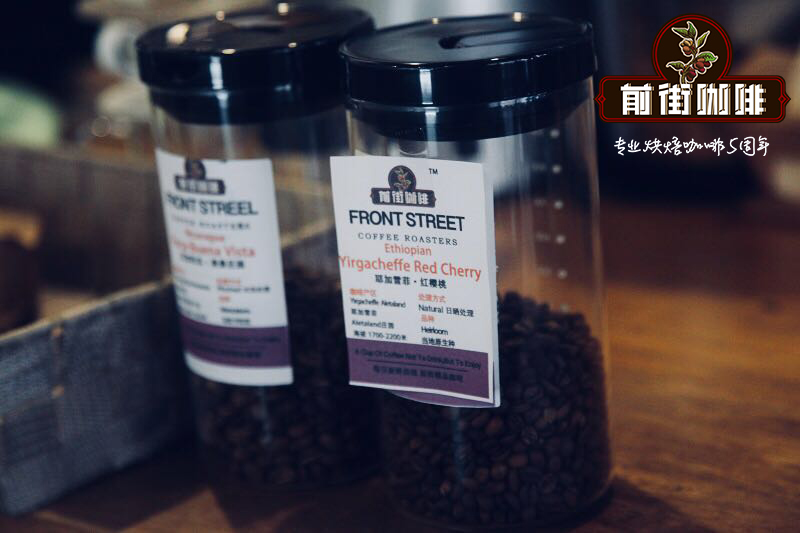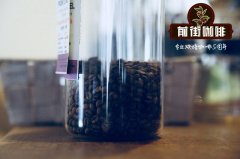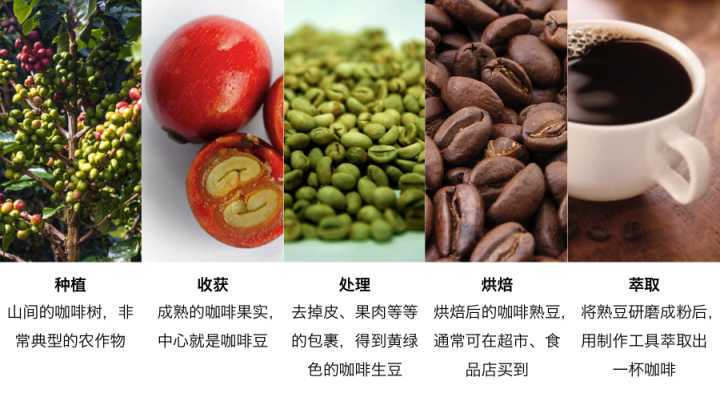How does a single coffee become an Italian coffee bean suitable for a coffee machine? Individual coffee and blended coffee

Professional coffee knowledge exchange more coffee bean information please follow the coffee workshop (Wechat official account cafe_style)
Popular science | knowledge of coffee varieties, introduction of the types and tastes of individual coffee, price of single bean
Coffee beans of different kinds and producing areas have their own unique taste, aroma and taste. If they are mixed and mixed according to their favorite flavor, they can make their own coffee.
Generally speaking, Arabica coffee from a single origin is enough to make coffee that tastes good for export; it has a delicate flavor, a soft taste and a sweet aftertaste. So there is no need for "blending" (that is, putting together coffee from different places).
However, if you are tired of drinking a single bean in your hand, try to create a unique flavor, or make a cup of coffee for someone (get is a good girl! ), mixing different flavors, aromas and different coffee from different places of production can create a new flavor and style, which is called spiced beans.
The principle and purpose of mixing beans
1. The theme of the match wants to match what kind of flavor, that is, to determine the goal of the match.
Generally speaking, mixed beans will use a key point to reconcile the taste, aroma and taste. From the sweet, bitter or sour coffee, pick out the preferred flavor, and then mix it according to a certain proportion; the coffee flavor includes the aroma smelled before drinking, the aroma contained in the mouth, and the aroma that recovers from the throat after drinking. Pick out the preferred aroma to enrich the taste, but still focus on one focus.
two。 Before blending coffee, you must first be familiar with the characteristics of each kind of coffee and understand the subtle relationship between roasting degree and coffee flavor.
After mixing beans, you can emphasize the taste and aroma of coffee and meet your own "exclusive coffee". First of all, before matching beans, we should first know the flavor of different varieties of coffee in the world, and beans have different characteristics according to their origin.
Central and South America has a mild taste and a balanced aroma: Africa has a charming floral fragrance in freshness; after knowing the mellow taste of Asia, you can make a great mix of beans, or you can pick out one from different continents to mix. Mix 2murmur3 varieties to match, and then choose a proper name, whether you enjoy it or as a gift is very good.
Special topic reading: popular science | knowledge of coffee varieties, introduction to the types and tastes of individual coffee.
3. Determine the task of participating in the blending of coffee beans.
Since a variety of coffee beans are used together, it is necessary to know whether the task of each kind of coffee beans is to make her show soft bitterness, distinct acidity or thick mellow taste, etc.
The relationship between matching and baking
In the way of matching beans, the most representative ones are "bake first and then mix" and "match first and then bake". Mixed beans will also vary with different baking methods of raw beans, and each has its own advantages and disadvantages. Although it is difficult to say which method is better, it is "baked first and then mixed" in taste, and "baked first and then baked" is better in management.
First bake separately, then mix the beans.
Each variety of raw beans is roasted separately, and then mixed in a certain proportion according to the coffee drink and taste. Mark the respective roasted beans and mix them with a small amount by hand according to a fixed proportion; you can also use a bean blending machine with a blender function to expect the best flavor of the coffee. The disadvantage is that when baking separately, in order to maintain the flavor, strict quality management is needed.
Before baking, mix the raw beans.
Mix and bake all kinds of raw beans. When baking, because the aromas of different varieties are mixed together, it will reduce the characteristics of different aromas and emphasize the overall aroma. The advantage of baking raw beans at one time is that the steps are simple and easy, but the disadvantage is that the original characteristics of raw beans can not be retained.
Of course, if you have already bought several cooked beans, you can omit this step.
Reference of matching proportion and common formula
The formula of mixed beans is not fixed, although it can be mixed according to individual taste, but it is necessary to master the fragrance characteristics of different kinds of beans in order to make delicious mixed beans.
Generally speaking, mixed beans are mainly mixed with 5 varieties, but for beginners, mixing less than 3 kinds first is easier to succeed, and it is better to increase the raw beans (or coffee beans) that want to emphasize the taste to more than 30%.
The golden ratio in the matching world-7:3
It is said that this is the secret recipe of a large international roasting company, as long as it is a mixture of two different coffee beans, the best flavor ratio is almost 7:3 (not if the flavor is too different). If there are three, try 7:2:1 or 6:2:2.
Several representative mixed proportions:
1. Formula: 30% Guatemala SHB+30% Mexico AL+30% Brazil NO.2.+10% Kilimanjaro AA
Results: aroma 5, bitterness 5, sweetness 5, acidity 5.
2. Formula: 40% Sumatra Manning G1% Colombia SUP+20% Brazil NO.19+10% Kilimanjaro AA
Results: aroma 5, bitterness 10, sweetness 5, acidity 3.
3. Formula: 20% mocha + 20% Hawaiian Cona no.1+20% Brazil NO.2.+40% Kilimanjaro AA
Results: aroma 9, bitterness 10, sweetness 7, acidity 10
4. Formula: 40% Guatemala SHB+30% mocha + 30% Kilimanjaro AA
Results: aroma 10, bitterness 5, sweetness 6, acidity 7
5. Recipe: 50% Brazil NO.2.+30% Mexico AL+20% Jamaica Blue Mountain Coffee
Results: aroma 5, bitterness 3, sweetness 5, acidity 6.
6. Recipe: 30% Brazilian NO.2.+50% Colombia SUP+20% Java Robsta Coffee
Results: aroma 3, bitterness 8, sweetness 8, acidity 6.
What is soe coffee? The concept of single Coffee Single Origin and the recommendation of Coffee baking degree
Important Notice :
前街咖啡 FrontStreet Coffee has moved to new addredd:
FrontStreet Coffee Address: 315,Donghua East Road,GuangZhou
Tel:020 38364473
- Prev

Know the charm of a single item coffee where a single item coffee how to adjust the taste of a single item coffee roasting
Professional coffee knowledge exchange More coffee bean information Please pay attention to coffee workshop (Weixin Official Accounts cafe_style) science popularization| Coffee varieties knowledge, single coffee types and taste introduction, single bean price coffee, some people drink refreshing, some people sip taste. It is bitter and sweet; it is like morning light, changing every minute. Coffee is changing, times are changing.
- Next

Coffee beginners must see: types and characteristics of coffee-how is coffee classified?
Professional coffee knowledge exchange more coffee bean information Please follow the coffee workshop (Wechat official account cafe_style) Coffee has gone through five steps: planting, harvesting, processing, roasting and extraction, from the crops in the mountains to the drinks in our hands. All the classifications we have seen so far are basically based on different factors / methods in these steps.
Related
- Detailed explanation of Jadeite planting Land in Panamanian Jadeite Manor introduction to the grading system of Jadeite competitive bidding, Red bid, Green bid and Rose Summer
- Story of Coffee planting in Brenka region of Costa Rica Stonehenge Manor anaerobic heavy honey treatment of flavor mouth
- What's on the barrel of Blue Mountain Coffee beans?
- Can American coffee also pull flowers? How to use hot American style to pull out a good-looking pattern?
- Can you make a cold extract with coffee beans? What is the right proportion for cold-extracted coffee formula?
- Indonesian PWN Gold Mandrine Coffee Origin Features Flavor How to Chong? Mandolin coffee is American.
- A brief introduction to the flavor characteristics of Brazilian yellow bourbon coffee beans
- What is the effect of different water quality on the flavor of cold-extracted coffee? What kind of water is best for brewing coffee?
- Why do you think of Rose Summer whenever you mention Panamanian coffee?
- Introduction to the characteristics of authentic blue mountain coffee bean producing areas? What is the CIB Coffee Authority in Jamaica?

